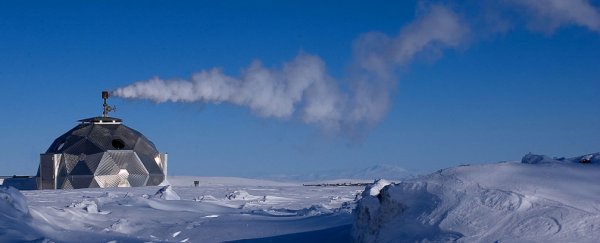One of the benefits of geothermal energy is that it's a hugely abundant and renewable power source lying in wait not very far below Earth's surface. And now a team of researchers has been able to simulate how the hottest, most powerful geothermal reservoirs came into existence, and the results could make it easier for us to find and tap new energy sources in the future.
Researchers from the Swiss Federal Institute of Technology in Zurich (ETH Zurich) have devised a computer model that can simulate how the hottest geothermal reservoirs we know about are geologically formed. These rare, extremely hot reservoirs contain supercritical water at temperatures up to 450°C - far hotter than the 250–350°C water temperatures of conventional geothermal sources.
Water becomes supercritical when it's heated above its critical point (374°C), where its physical properties start to resemble a mixture of both liquid and gas behaviours. Supercritical water can be relatively dense like a liquid, but it will also flow through solids like a gas. Aside from this scientific oddity, the main benefit of supercritical water from a resources perspective is the fact that its hotter temperature conveys an accordingly greater thermal energy.
Whereas conventional geothermal boreholes have a capacity of 3 to 5 megawatts, a supercritical reservoir can produce in the order of 35 megawatts. A vast improvement, which helps explain why scientists and the energy industry are super-interested in finding more supercritical wells. The hunt has been on since 2008, when the first such supercritical reservoir was discovered lying above a magma crater underneath Krafla in Iceland – a country which generates two-thirds of its energy from geothermal sources.
The researchers from ETH Zurich studied the Krafla well and devised a computer model to simulate how such a rare geothermal system came to be. The results, published in Nature Communications, could make it easier for us to locate supercritical reservoirs in the future.
"The simulations offer a realistic representation of this reservoir's behaviour, even though we kept the model as simple as possible and built in only a few parameters," said study co-author Thomas Driesner, in a statement. "The model gives us some idea of the criteria by which these zones develop – and how to recognise them."
The researchers conclude that similar resources may be widespread in volcanic areas, meaning the phenomena could well occur in Japan and New Zealand. The team is now collaborating on its findings with researchers from around the world and intends to work further with geophysicists to see whether seismic techniques can be used to locate additional supercritical wells.
